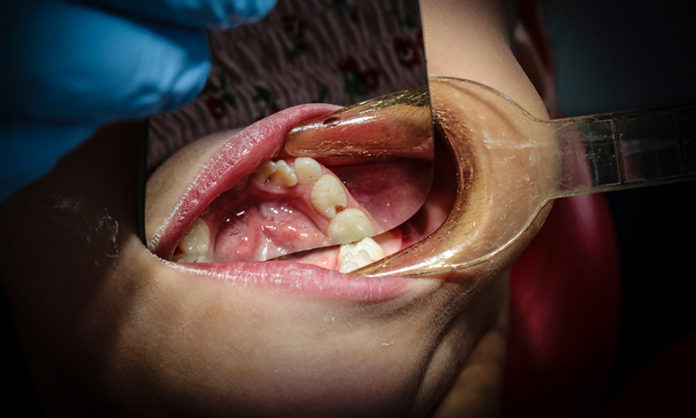A dentist’s drill might not be the best way to tackle tooth decay in children’s teeth, a new study has concluded.
Findings from a major dental trial suggest that preventing tooth decay from occurring in the first place is the most effective way for parents to help avoid pain and infection from decay in their children’s teeth.
A three-year study comparing three different treatment options for tooth decay in children’s teeth, led by dentists from the University of Sheffield School of Clinical Dentistry and the Universities of Dundee, Newcastle, Cardiff, Queen Mary University of London and Leeds, has found no evidence to suggest that conventional fillings are more effective in stopping pain and infection from tooth decay in primary teeth, than sealing decay into teeth, or using prevention techniques alone.
The FiCTION trial, the largest of its kind to date, also found that 450 children who took part in the study experienced tooth decay and pain, regardless of which kind of dental treatment they received.
During the study, more than 1,140 children between the ages of three and seven with visible tooth decay were recruited by dentists working in one of 72 dental clinics throughout the country. One of three treatment approaches was then chosen randomly for each child’s dental care for the duration of the trial, which was up to three years.
The first approach avoided placing any fillings and aimed to prevent new decay by reducing sugar intake, ensuring twice daily brushing with fluoridated toothpaste, application of fluoride varnish and placing of fissure sealants on the first permanent molar (back) teeth.
The second option involved drilling out tooth decay, which was based upon what has been considered the standard “drill and fill” practice for more than 50 years together with preventive treatments.
The third treatment strategy was a minimally invasive approach where tooth decay was sealed in under a metal crown or a filling to stop it progressing together with preventive treatments.
Sealing-in with preventive treatment was most likely to be considered the best way of managing children’s tooth decay if society are willing to pay a minimum of £130 to avoid an episode of pain or infection.
Professor Zoe Marshman, Chair of dental public health at the University of Sheffield, said: “As part of this study the team in Sheffield interviewed children, parents and dental professionals about their views on the different ways of treating tooth decay. The key finding was the importance of trust that the right treatment for each child will be carried out in a child-centred way.
“The good news however is that tooth decay can be prevented in the first place by encouraging children to brush their teeth thoroughly twice a day with fluoride toothpaste, reducing sugar consumption and seeing a dentist regularly.”
Professor Nicola Innes, Chair of Paediatric Dentistry at the University of Dundee and lead author on the paper published today, said, “Our study shows that each way of treating decay worked to a similar level but that children who get tooth decay at a young age have a high chance of experiencing toothache and abscesses regardless of the way the dentist manages the decay.
“What is absolutely clear is that the best way to manage tooth decay is not by drilling it out or sealing it in – it’s by preventing it in the first place.”
Professor Chris Deery, Chair of Paediatric Dentistry at the University of Sheffield, said: “Tooth decay effects over one-third of children in Sheffield causing pain, sleepless nights and time missed from school. This study will improve the way we teach our dental students in Sheffield and our city-wide efforts to improve children’s oral health.”







